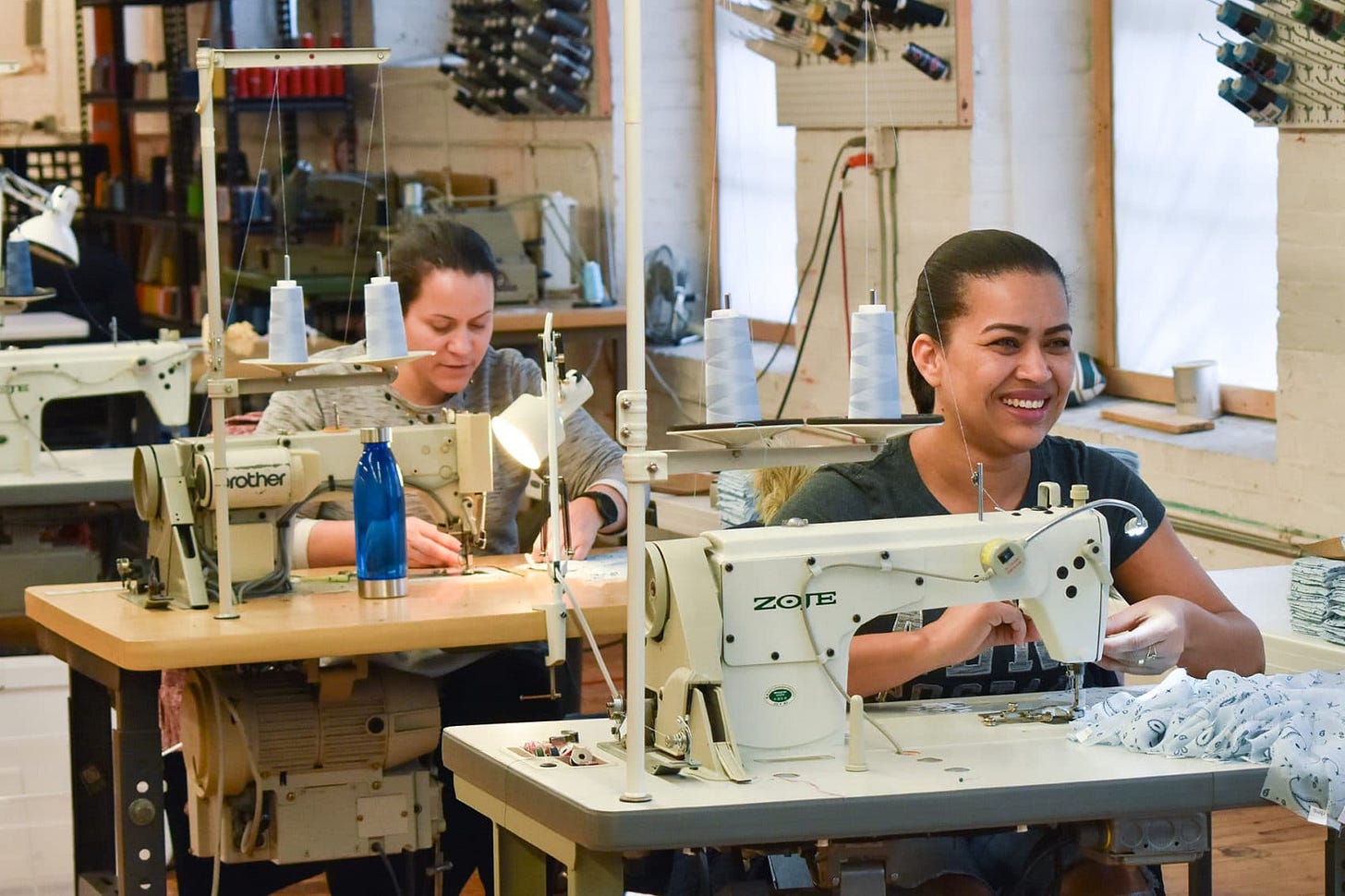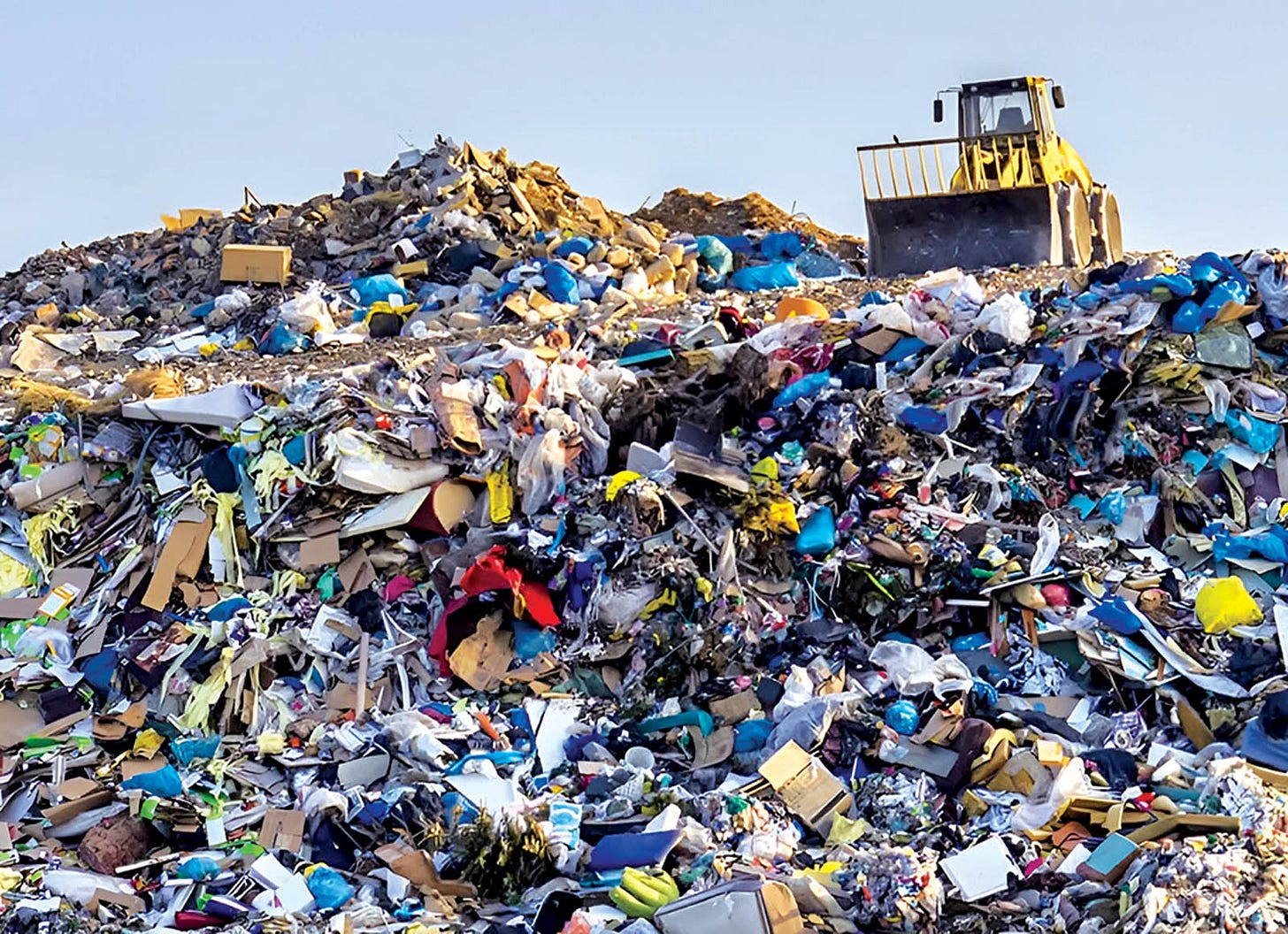Tariffs and textiles. Textiles and tariffs.
Digesting the impacts of global tariffs on efforts to reshore the textile industry in our communities.

My first week back in the U.S. last week got off to a bang with President Trump's announcement of global tariffs last Wednesday. While it would be a much larger exercise to fully consider the impact of tariffs on the textile industry in general - I would like to digest a bit together with you the impacts of tariffs on the work to rebuild the U.S textile industry. Here I am also going to set aside the impacts of tariffs on the larger economy. Though we will see U.S. manufacturing impacts with so many raw materials and parts coming from overseas - which will have an impact on jobs and the ability of people to buy stuff in the short term (including textiles) - I am also for the moment setting this impact aside.
Lastly - I need to state off the bat that I am not someone who is opposed to tariffs. In my mind - it stands to reason that if NAFTA and the follow-on treaties and agreements that ushered in “free trade” in part led to the exodus of 5 million U.S. manufacturing jobs (The fall of employment in the manufacturing sector : Monthly Labor Review: U.S. Bureau of Labor Statistics) - some version of tariffs needs to play a role in righting the imbalance that says that products purchased in the U.S. can be made just as easily in a community 4,000 miles from here that is allowed to dump their manufacturing waste into rivers and pay their people poverty wages in countries where the standard of living is already WAY cheaper than in the U.S. That that product can be just as easily sold into the U.S. economy as a product made by a person paid a living wage in our community, hired by a factory that cares what happens to their waste - and that it does not pollute their community- this to me is an unacceptable scenario for our workers and local economies. We now know from experience that if we offer people way cheaper options for goods - like fast fashion - and move the impacts of the environmental degradation that made those products possible thousands of miles from our communities - people will choose the cheaper option. They will tend not to think about the long-term impacts of their decisions on the environment or on the jobs lost in their community from the manufacturing exodus. That is just the way our minds mostly work. And so something IS required to correct this.
But there is also the reality that we just don’t have the infrastructure to bring back manufacturing through tariffs alone. Take for example - fabric - the raw material for clothing manufacturing - which is fighting mightily to rebuild in the U.S. We produce hardly any fabric at all in the U.S. Whole categories are missing - like woven cotton fabrics used in blouses. So those fabrics have to be imported - largely from China, India, Europe - Japan etc. - all countries with tariffs ranging from 40-67% since President Trump’s announcement. So now a U.S. made apparel brand must pay 40-70% more for their raw materials - and good - ethical, natural fibers were already EXTREMELY expensive compared to what we have been used to in the past. A brand choosing to do their sewing in the U.S. is already paying the higher labor cost because they care about jobs and the environment. They fight day in and day out to get customers to choose their higher priced goods to keep them in business alongside the overseas competition that is so very much cheaper. And so when they have to raise their prices by say 10-25% that makes a big impact.
It is also a place where we are very vulnerable for a trade war - as there are lots of industries like textiles that require parts and raw materials from these and other countries. And, unfortunately we can’t just flip a switch and start producing fabric here - it requires pricey investments in equipment - supply chains for yarns - raw materials - all the parts of the market that have broken down over the years - as we exported job, expertise and infrastructure overseas - yes because of NAFTA and free trade. While we can and are investing in bringing these pieces back - most notably in West Virginia with WVU’s $450k USDA grant to revive the wool industry - the truth is that even with a lot of focus and more resources it is going to take time.
I saw on my Instagram feed that a favorite brand with exceptional communications around apparel manufacturing costs and a commitment to U.S. sewing manufacturing - Elizabeth Suzann - posted a plea around purchases from their brand. In a business that is extremely tight for cash flow between clothing line releases to be able to reinvest in more fabric - Elizabeth Suzann was simply not able to afford the fabric for her next batch of products when her fabric supplier said that if she could not make payment for the fabric by the end of last week - the price would go up 25% as a result of tariffs. At the time of her post on Thursday her company was in no position to pay this invoice early. But fans came to the rescue and helped to make additional purchases on their site so that they could have the cash flow to pay the invoice early. But many other brands are going to struggle with this. And in textile manufacturing - no fabric, no product. Done. To give you a little more context - Elizabeth Suzann is a woman who bounced back after refusing to stop paying her people in Nashville, Tennessee during Covid and going bankrupt. She built back and here she is again caught in the crosshairs. This vital work is so incredibly precarious these days.
So I guess this is all to say - that I am deeply concerned about how fast these tariffs are taking place - and whether they are being well thought through. I am concerned that we don’t have a coherent vision for rebuilding U.S. manufacturing - of which tariffs should complement – not be THE major tool. Because it is not strategic enough if we don’t start with the vision for rebuilding our manufacturing before launching major - economy disrupting tools. What industries does it make sense to focus on? What parts of those industries? What will they need to innovate and grow? How can we promote innovation? And how can we incorporate sustainable manufacturing practices so we don’t bring the pollution back with the manufacturing jobs?
For example - for reshoring U.S. textiles - we could choose to focus on bringing innovative sewing manufacturing models back in the short term and sustainable fiber and fabric manufacturing in the long term. But for us to be successful reshoring sewing manufacturing- we are going to need to hold the cost of raw materials steady so that we have a shot of getting this work off the ground with the higher labor prices for sewing in the U.S. What is the plan here? I imagine that other industries working to bring U.S. manufacturing jobs struggle with these very same questions.
Could there be some good things that happen from these tariffs? - absolutely: An urgent need to focus on recycling the mounds and mounds of textiles - yes from cheap - “free traded” clothing. A focus on repurposing. A focus on an industrial sewing process that reduces fabric waste or that reuse old textiles. A focus on repairing what we have - and businesses that do that. And - if you’ve been getting all the newsletters from your favorite brands that I have - an increase in transparency of where things come from. That is a good thing. In the past we’ve been shielded from it. The textile industry nerd in me gets excited to see brands revealing where their materials come from along with why their prices are going up from the tariffs. We have to know this stuff to fix this industry.
In the end - what we care about is bringing high quality jobs back to our community, making stuff we can be proud of and doing it in a way that doesn’t jeopardize our ability to live productively on this Earth into the future. Increasingly we care about creating fertile ground for young people here to be hopeful about their future in our communities. I wonder if we can use these tariffs as an opportunity to have serious conversations about how to make America a more fertile place again for opportunity. Will you do that with me?
Time will tell how these tariffs will impact our economy, our communities and our textile industry. I will keep writing about it.
If you are not already a paid subscriber and would like to support this work, please consider upgrading your subscription or sharing my work with someone who would like it.
Thank you for your support!
Keep reading with a 7-day free trial
Subscribe to ReidMiller.us Substack to keep reading this post and get 7 days of free access to the full post archives.




